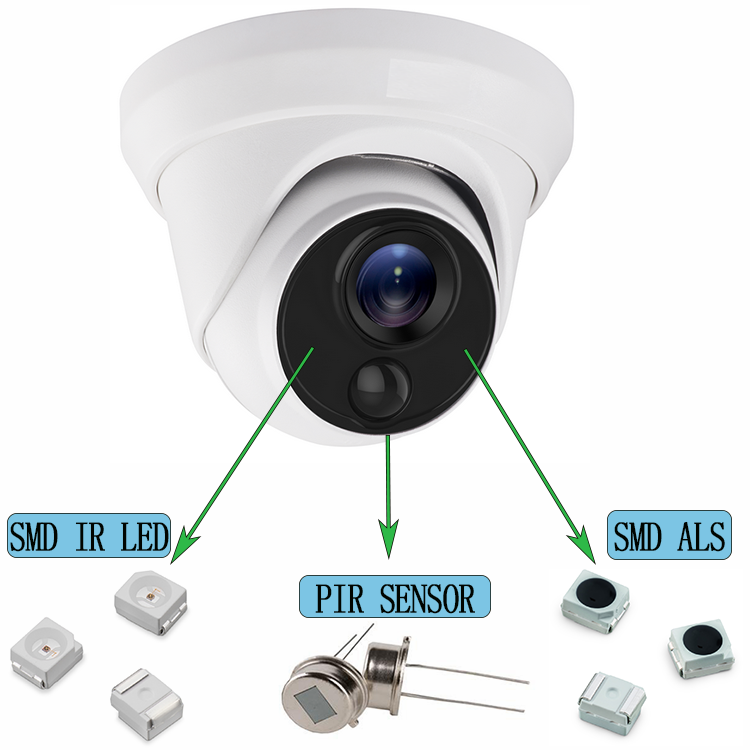2023-10-20
The working principle of PIR sensors is based on the principle that a human body or other warm object radiates heat in the form of infrared radiation. When a human body or other warm object enters the sensing range of the PIR sensor, the sensor detects infrared radiation from the human body or other object and generates an electric charge. These charges accumulate between the two metal sheets of the sensor, creating a potential difference that causes the sensor to output an electrical signal. When the PIR sensor receives a certain electrical signal, it will start the internal circuit board, so that it output a high level signal, which triggers the controller to work. When the controller receives the high level signal of the PIR sensor, it will switch the output signal that was previously at a low level to a high level, thereby driving the work of the subsequent circuit. This high level signal can be used to control relays, buzzers, or other electronic devices.
PIR sensor has the characteristics of large detection range, high sensitivity, easy to use, etc., often used in anti-theft alarm, intelligent control and other fields. It can be selected according to different application scenarios, different models and specifications. When using PIR sensors, it is necessary to pay attention to the installation position and height, as well as the distance and Angle between the detected object. In addition, the installation of PIR sensors also requires attention to some details. It usually needs to be installed in the center of the detected object or space, and there can be no large metal objects around it, so as not to affect its normal work. In addition, the lens of the PIR sensor should be kept clean to avoid dust or other objects to ensure that it can receive infrared radiation normally.
In the application of anti-theft alarm, the PIR sensor can be linked with other devices such as alarms and cameras to achieve automatic alarm and monitoring. When someone enters the monitoring range, the PIR sensor will output a high level signal, trigger the alarm to emit an alarm sound, and transmit the alarm signal to the camera or other monitoring equipment to achieve video monitoring and recording. This can effectively improve the effect of security and protect people's personal and property safety.
In short, the PIR sensor is a sensor that uses the principle of infrared radiation to detect the presence of the human body or other warm objects and converts it into an electrical signal output. It has a wide range of application fields and good performance characteristics, can provide convenient and efficient detection and control solutions for automation control, smart home, security monitoring and other fields. In addition, the PIR sensor also has the characteristics of energy saving and environmental protection. It uses a non-invasive passive reception mode, produces no electromagnetic interference, and does not require additional light sources, so the impact on the environment is minimal. At the same time, the PIR sensor has a low power consumption and does not generate a lot of heat for a long time, so it can effectively reduce energy consumption and carbon emissions.
In the field of smart home, PIR sensors can be used for intelligent lighting, intelligent security and other aspects. When someone enters the room, the PIR sensor can automatically turn on the lighting equipment to increase the brightness of the room and make people feel more comfortable. At the same time, it can also be linked with intelligent security systems to achieve automatic monitoring and alarm of home security protection, effectively improving the level of home security.
In the field of industrial automation, PIR sensors can be used to detect the position and movement of people or objects on a production line. By linking PIR sensors with mechanical arms, conveyor belts and other devices, intelligent control of automated production lines can be achieved to improve production efficiency and product quality.
In short, PIR sensor is a very practical sensor, it can be widely used in various fields, for automation control, smart home, security monitoring and other aspects to provide convenient and efficient detection and control solutions. By understanding the principle and application of PIR sensors, we can better exploit its advantages and potential to bring more convenience and safety to our lives and work.